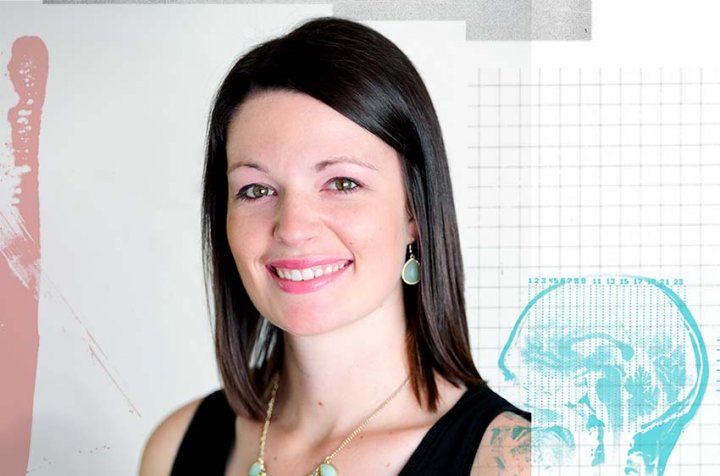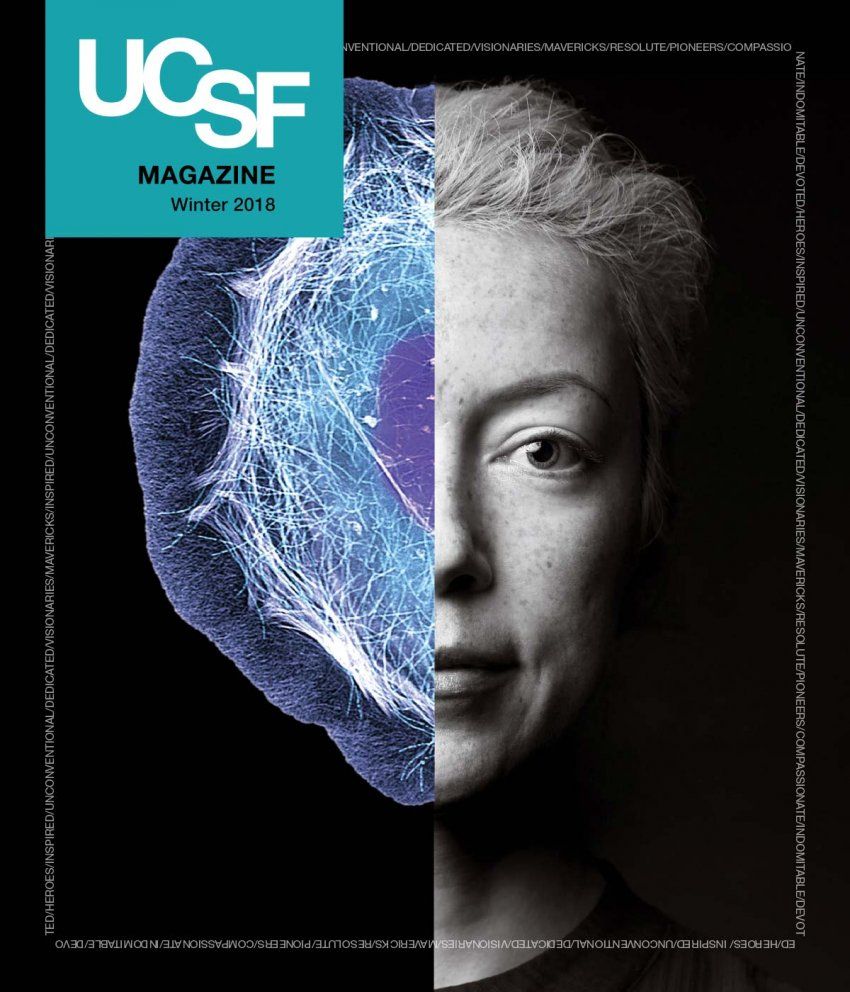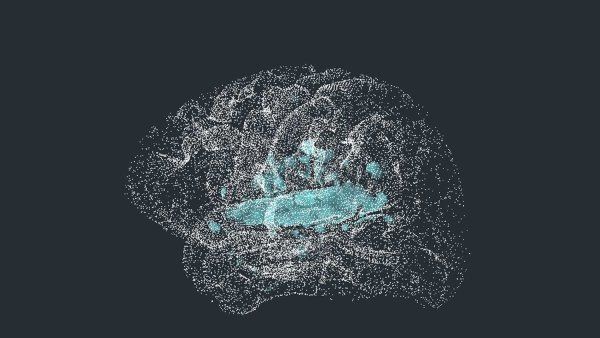How One Researcher is Unfolding the Mystery of CTE
Amanda Woerman, PhD, shares how basic science fuels efforts to end trauma-induced brain disease.
MRI depicts a healthy brain.
It’s almost impossible to watch or read the news today without seeing a headline about chronic traumatic encephalopathy, or CTE. The neurodegenerative disease, widely believed to result from repetitive concussive and subconcussive head trauma, has been implicated in the deaths of hundreds of football players, boxers, and other contact-sport athletes. And the problems CTE can cause – including memory loss, depression, and aggressive behavior – often don’t reveal themselves until years after blows to the head have ceased. We spoke with Amanda Woerman, PhD, an assistant professor who studies CTE at UCSF’s Institute for Neurodegenerative Diseases, to find out why understanding how the disease takes shape is so crucial to efforts to treat it and how she found herself studying CTE.
Why did you choose to study CTE?
I grew up as a figure skater in Idaho and suffered a number of serious head injuries. When I was 5, I was practicing on the ice, and a hockey player ran into me. I fell and hit my head and wound up in a coma for 12 hours. A few years later, I was working on my footwork, and my blade caught in a groove leftover from an early-morning hockey practice. I fell, slammed my head hard on the ice, and ended up with a bad concussion. In the days after, I couldn’t read, and I was vomiting uncontrollably.

Amanda Woerman, MD
How did those early experiences translate to a career studying CTE?
When I was in graduate school studying air-pollution exposure, the media started to focus on neurodegeneration in athletes, and I became fascinated. I was attending a lot of scientific conferences, but instead of going to the sessions focused on pollution, I’d find myself in sessions on CTE and traumatic brain injury (TBI). Eventually I realized that I wanted to understand this process with CTE, in terms of how injury gives rise to disease. I also wanted to understand what might be happening in my own brain.
Tell me about your unique approach to the disease.
I’m focused on understanding the role of the tau protein in CTE. If we don’t understand how tau misfolds in CTE, we may not be able to develop a drug that can address this misfolding and treat this devastating disease.
What is protein misfolding and why does it matter?
All proteins have to fold in order to do their jobs – it’s a fundamental biological process – and the shape proteins take determines what they do. But when proteins fail to fold correctly, or misfold, they become dangerous.
Today, we know that the progression of diseases like Alzheimer’s, Parkinson’s, and CTE is the result of the spread of misfolded proteins. These misfolded proteins, also known as “prions,” were discovered by my mentor [UCSF professor and Nobel laureate] Stan Prusiner.
If we can understand the specific way that proteins misfold in these and other diseases, we can work toward developing drugs that target this dysfunction.
What have you discovered about tau as it relates to CTE?
Tau is a really interesting protein because there are many versions of it, and it expresses itself differently in different diseases. With new forms of microscopy, we’ve begun to understand the unique structure of tau in CTE. That’s been hugely important because it gives us the foundation to develop drugs that target CTE-specific tau, and it will help ensure that we develop more precise diagnostics. Right now, it’s really difficult, if not impossible, to distinguish between two different tauopathies – for example, Alzheimer’s and CTE.
How are you using this new knowledge to drive your work forward?
We’re in the process of developing assays that will allow us to screen drugs against different conformations of tau. As we move forward in the drug discovery process, we can use this panel of assays to test compounds and see whether they work better for CTE or Alzheimer’s or another disease entirely.
Drug development is a feedback-loop system, so we’re constantly feeding more data into the system that chemists use to make new compounds, in order to help move the process forward.





